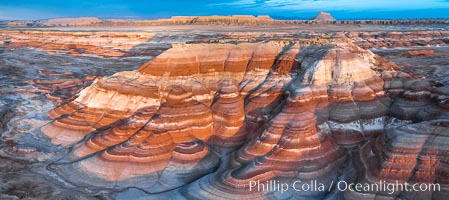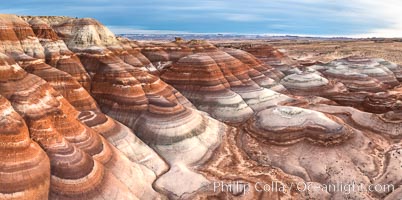
Panorama of Box Lake, morning, Little Lakes Valley, John Muir Wilderness, Inyo National Forest.
Location: Little Lakes Valley, Inyo National Forest, California
Image ID: 31178
Panorama dimensions: 4029 x 14311
Location: Little Lakes Valley, Inyo National Forest, California
Image ID: 31178
Panorama dimensions: 4029 x 14311

Panorama of Box Lake, morning, Little Lakes Valley, John Muir Wilderness, Inyo National Forest.
Location: Little Lakes Valley, Inyo National Forest, California
Image ID: 31179
Panorama dimensions: 5764 x 20753
Location: Little Lakes Valley, Inyo National Forest, California
Image ID: 31179
Panorama dimensions: 5764 x 20753

Panoramic Photo of Crystal Lake, Mammoth Lakes, Inyo National Forest.
Location: Mammoth Lakes, Inyo National Forest, California
Image ID: 31188
Panorama dimensions: 5659 x 19050
Location: Mammoth Lakes, Inyo National Forest, California
Image ID: 31188
Panorama dimensions: 5659 x 19050
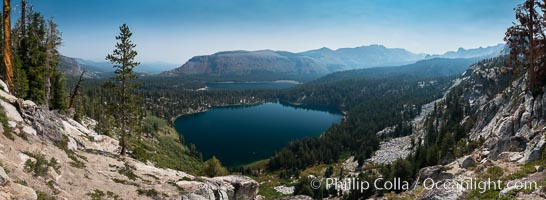
Panoramic Photo of Lake George, Mammoth Lakes, Inyo National Forest.
Location: Mammoth Lakes, Inyo National Forest, California
Image ID: 31189
Panorama dimensions: 5772 x 15775
Location: Mammoth Lakes, Inyo National Forest, California
Image ID: 31189
Panorama dimensions: 5772 x 15775
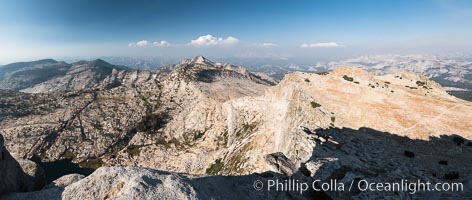
View from Summit of Mount Hoffmann, Ten Lakes Basin at lower left, looking northeast toward remote northern reaches of Yosemite National Park, panorama.
Location: Mount Hoffmann, Yosemite National Park, California
Image ID: 31190
Panorama dimensions: 5623 x 13269
Location: Mount Hoffmann, Yosemite National Park, California
Image ID: 31190
Panorama dimensions: 5623 x 13269
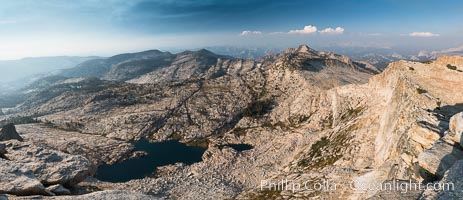
View from Summit of Mount Hoffmann, Ten Lakes Basin at lower left, looking northeast toward remote northern reaches of Yosemite National Park, panorama.
Location: Mount Hoffmann, Yosemite National Park, California
Image ID: 31192
Panorama dimensions: 5677 x 13143
Location: Mount Hoffmann, Yosemite National Park, California
Image ID: 31192
Panorama dimensions: 5677 x 13143
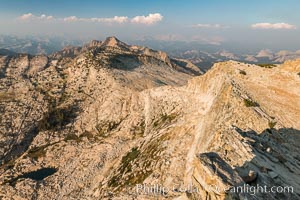
View from Summit of Mount Hoffmann, Ten Lakes Basin at lower left, looking northeast toward remote northern reaches of Yosemite National Park.
Location: Mount Hoffmann, Yosemite National Park, California
Image ID: 31193
Location: Mount Hoffmann, Yosemite National Park, California
Image ID: 31193
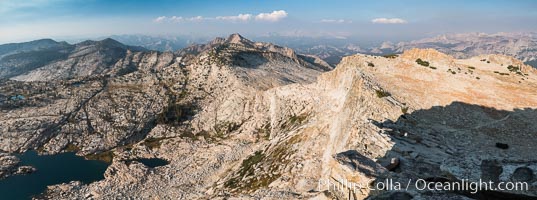
View from Summit of Mount Hoffmann, Ten Lakes Basin at lower left, looking northeast toward remote northern reaches of Yosemite National Park, panorama.
Location: Mount Hoffmann, Yosemite National Park, California
Image ID: 31194
Panorama dimensions: 6109 x 16400
Location: Mount Hoffmann, Yosemite National Park, California
Image ID: 31194
Panorama dimensions: 6109 x 16400
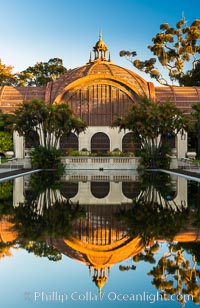
The Botanical Building in Balboa Park, San Diego. The Botanical Building, at 250 feet long by 75 feet wide and 60 feet tall, was the largest wood lath structure in the world when it was built in 1915 for the Panama-California Exposition. The Botanical Building, located on the Prado, west of the Museum of Art, contains about 2,100 permanent tropical plants along with changing seasonal flowers. The Lily Pond, just south of the Botanical Building, is an eloquent example of the use of reflecting pools to enhance architecture. The 193' by 43' foot pond and smaller companion pool were originally referred to as Las Lagunas de las Flores (The Lakes of the Flowers) and were designed as aquatic gardens. The pools contain exotic water lilies and lotus which bloom spring through fall.
Location: Balboa Park, San Diego, California
Image ID: 28822
Location: Balboa Park, San Diego, California
Image ID: 28822
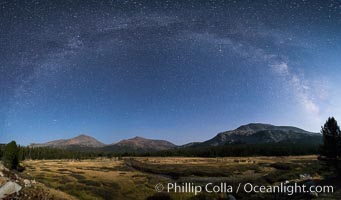
Milky Way over Tuolumne Meadows, Mount Dana (left), Mount Gibbs (center), Mammoth Peak and Kuna Crest (right), Dana Fork of the Tuolumne River.
Location: Yosemite National Park, California
Image ID: 31180
Panorama dimensions: 6062 x 10349
Location: Yosemite National Park, California
Image ID: 31180
Panorama dimensions: 6062 x 10349

Juvenile bald eagle, calling vocalizing, side profile view, second year coloration plumage, closeup of head, snowflakes visible on feathers. Immature coloration showing white speckling on feathers.
Species: Bald eagle, Haliaeetus leucocephalus, Haliaeetus leucocephalus washingtoniensis
Location: Kachemak Bay, Homer, Alaska
Image ID: 22685
Species: Bald eagle, Haliaeetus leucocephalus, Haliaeetus leucocephalus washingtoniensis
Location: Kachemak Bay, Homer, Alaska
Image ID: 22685

Juvenile bald eagle, translucent nictating membrane drawn completely across eye, second year coloration plumage, closeup of head, snowflakes visible on feathers. Immature coloration showing white speckling on feathers.
Species: Bald eagle, Haliaeetus leucocephalus, Haliaeetus leucocephalus washingtoniensis
Location: Kachemak Bay, Homer, Alaska
Image ID: 22693
Species: Bald eagle, Haliaeetus leucocephalus, Haliaeetus leucocephalus washingtoniensis
Location: Kachemak Bay, Homer, Alaska
Image ID: 22693
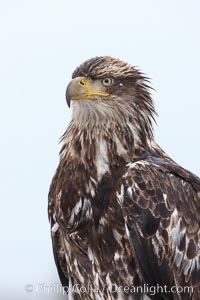
Juvenile bald eagle, second year coloration plumage, head, shoulders and upper body, snowflakes visible on feathers. Immature coloration showing white speckling on feathers.
Species: Bald eagle, Haliaeetus leucocephalus, Haliaeetus leucocephalus washingtoniensis
Location: Kachemak Bay, Homer, Alaska
Image ID: 22704
Species: Bald eagle, Haliaeetus leucocephalus, Haliaeetus leucocephalus washingtoniensis
Location: Kachemak Bay, Homer, Alaska
Image ID: 22704
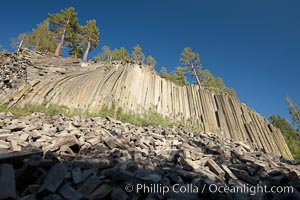
Devil's Postpile, a spectacular example of columnar basalt. Once molten and under great pressure underground, the lava that makes up Devil's Postpile cooled evenly and slowly, contracting and fracturing into polygonal-sided columns. The age of the formation is estimated between 100 and 700 thousand years old. Sometime after the basalt columns formed, a glacier passed over the formation, cutting and polishing the tops of the columns. The columns have from three to seven sides, varying because of differences in how quickly portions of the lava cooled.
Location: Devils Postpile National Monument, California
Image ID: 23281
Location: Devils Postpile National Monument, California
Image ID: 23281
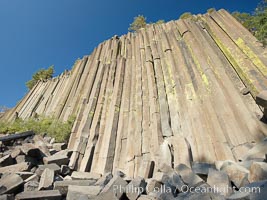
Devil's Postpile, a spectacular example of columnar basalt. Once molten and under great pressure underground, the lava that makes up Devil's Postpile cooled evenly and slowly, contracting and fracturing into polygonal-sided columns. The age of the formation is estimated between 100 and 700 thousand years old. Sometime after the basalt columns formed, a glacier passed over the formation, cutting and polishing the tops of the columns. The columns have from three to seven sides, varying because of differences in how quickly portions of the lava cooled.
Location: Devils Postpile National Monument, California
Image ID: 23282
Location: Devils Postpile National Monument, California
Image ID: 23282
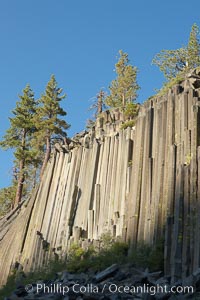
Devil's Postpile, a spectacular example of columnar basalt. Once molten and under great pressure underground, the lava that makes up Devil's Postpile cooled evenly and slowly, contracting and fracturing into polygonal-sided columns. The age of the formation is estimated between 100 and 700 thousand years old. Sometime after the basalt columns formed, a glacier passed over the formation, cutting and polishing the tops of the columns. The columns have from three to seven sides, varying because of differences in how quickly portions of the lava cooled.
Location: Devils Postpile National Monument, California
Image ID: 23283
Location: Devils Postpile National Monument, California
Image ID: 23283
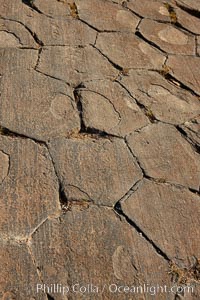
Devil's Postpile, a spectacular example of columnar basalt. Once molten and under great pressure underground, the lava that makes up Devil's Postpile cooled evenly and slowly, contracting and fracturing into polygonal-sided columns. The age of the formation is estimated between 100 and 700 thousand years old. Sometime after the basalt columns formed, a glacier passed over the formation, cutting and polishing the tops of the columns. The columns have from three to seven sides, varying because of differences in how quickly portions of the lava cooled.
Location: Devils Postpile National Monument, California
Image ID: 23284
Location: Devils Postpile National Monument, California
Image ID: 23284
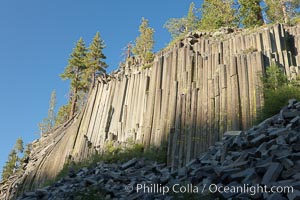
Devil's Postpile, a spectacular example of columnar basalt. Once molten and under great pressure underground, the lava that makes up Devil's Postpile cooled evenly and slowly, contracting and fracturing into polygonal-sided columns. The age of the formation is estimated between 100 and 700 thousand years old. Sometime after the basalt columns formed, a glacier passed over the formation, cutting and polishing the tops of the columns. The columns have from three to seven sides, varying because of differences in how quickly portions of the lava cooled.
Location: Devils Postpile National Monument, California
Image ID: 23286
Location: Devils Postpile National Monument, California
Image ID: 23286
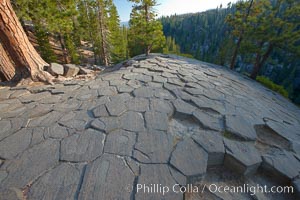
Devil's Postpile, a spectacular example of columnar basalt. Once molten and under great pressure underground, the lava that makes up Devil's Postpile cooled evenly and slowly, contracting and fracturing into polygonal-sided columns. The age of the formation is estimated between 100 and 700 thousand years old. Sometime after the basalt columns formed, a glacier passed over the formation, cutting and polishing the tops of the columns. The columns have from three to seven sides, varying because of differences in how quickly portions of the lava cooled.
Location: Devils Postpile National Monument, California
Image ID: 23287
Location: Devils Postpile National Monument, California
Image ID: 23287
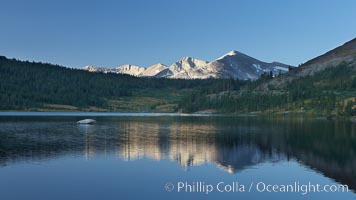
Mammoth Peak rises above a placid Tioga Lake, at sunrise.
Location: Tioga Lake, Yosemite National Park, California
Image ID: 23268
Location: Tioga Lake, Yosemite National Park, California
Image ID: 23268
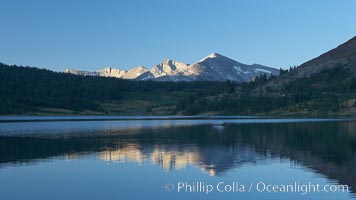
Mammoth Peak rises above a placid Tioga Lake, at sunrise.
Location: Tioga Lake, Yosemite National Park, California
Image ID: 23290
Location: Tioga Lake, Yosemite National Park, California
Image ID: 23290
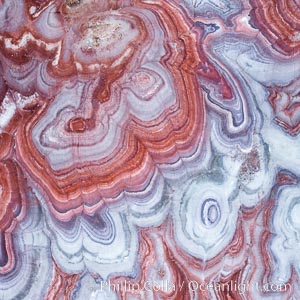
Fantastic colorful sedimentary patterns, Bentonite layers are seen as striations exposed in the Utah Badlands, part of the Brushy Basin shale member of the Morrison Formation. This layer was formed during Jurassic times when mud, silt, fine sand, and volcanic ash were deposited in swamps and lakes. Aerial photograph.
Location: Utah
Image ID: 38020
Location: Utah
Image ID: 38020
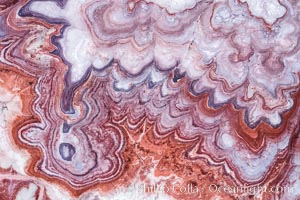
Fantastic colorful sedimentary patterns, Bentonite layers are seen as striations exposed in the Utah Badlands, part of the Brushy Basin shale member of the Morrison Formation. This layer was formed during Jurassic times when mud, silt, fine sand, and volcanic ash were deposited in swamps and lakes. Aerial photograph.
Location: Utah
Image ID: 38021
Location: Utah
Image ID: 38021
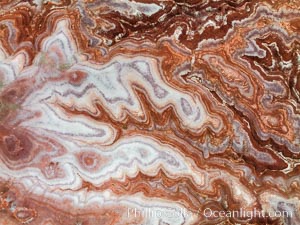
Fantastic colorful sedimentary patterns, Bentonite layers are seen as striations exposed in the Utah Badlands. The Bentonite Hills are composed of the Brushy Basin shale member of the Morrison Formation. This layer was formed during Jurassic times when mud, silt, fine sand, and volcanic ash were deposited in swamps and lakes. Aerial photograph.
Location: Utah
Image ID: 38030
Location: Utah
Image ID: 38030
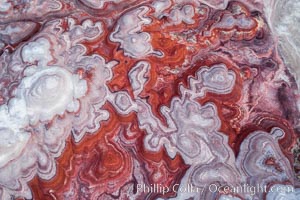
Fantastic colorful sedimentary patterns of Bentonite layers, seen as striations exposed in the Utah Badlands. The Bentonite Hills are composed of the Brushy Basin shale member of the Morrison Formation formed during Jurassic times when mud, silt, fine sand, and volcanic ash were deposited in swamps and lakes into layers, now revealed through erosion. Aerial photograph.
Location: Utah
Image ID: 38047
Location: Utah
Image ID: 38047
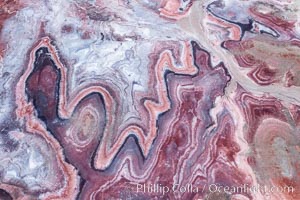
Fantastic colorful sedimentary patterns of Bentonite layers, seen as striations exposed in the Utah Badlands. The Bentonite Hills are composed of the Brushy Basin shale member of the Morrison Formation formed during Jurassic times when mud, silt, fine sand, and volcanic ash were deposited in swamps and lakes into layers, now revealed through erosion. Aerial photograph.
Location: Utah
Image ID: 38053
Location: Utah
Image ID: 38053
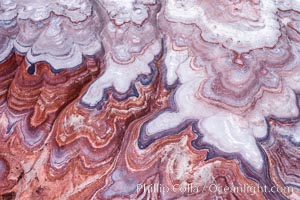
Fantastic colorful sedimentary patterns of Bentonite layers, seen as striations exposed in the Utah Badlands. The Bentonite Hills are composed of the Brushy Basin shale member of the Morrison Formation formed during Jurassic times when mud, silt, fine sand, and volcanic ash were deposited in swamps and lakes into layers, now revealed through erosion. Aerial photograph.
Location: Utah
Image ID: 38056
Location: Utah
Image ID: 38056
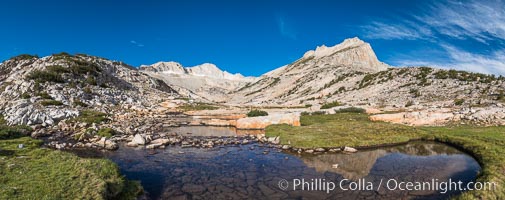
First View of Conness Lakes Basin with Mount Conness (12589' center) and North Peak (12242', right), Hoover Wilderness.
Location: Conness Lakes Basin, Hoover Wilderness, California
Image ID: 31057
Panorama dimensions: 5623 x 14211
Location: Conness Lakes Basin, Hoover Wilderness, California
Image ID: 31057
Panorama dimensions: 5623 x 14211
